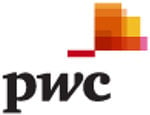
Top stories




ICTThe new fundamentals: What employees expect from IT support in 2026
Oscar Modiba, BET Software 2 days

Marketing & MediaTake a trip down the wilder side of memory lane on the History Channel this January
Hearst Networks Africa 2 days

Most UK law firms have seen a decline in fee income in the last year, driven by downward pressure on pricing, coupled with a general contraction in the international legal market, according to PwC's 2010 law firms' survey.
As a response to the fall in revenues resulting from the global economic downturn, many firms have turned to cost reduction and restructuring programmes as a means of preserving profitability. The firms ranked 11-25 have seen the greatest pressure on fee income with the highest average fall in UK fee income at 6%, the survey finds.
Top 10 firms have benefited from scale and reach. The 11-25 tier has continued to experience difficult market conditions. Outside the Top 25, a number of successful niche practices have emerged within the 26-50 ranking, with 5% of these firms reporting growth in fee income of between 11% and 15%.
Alistair Rose, partner and leader of the professional partnerships advisory group, PwC commented:
"As in 2009, Top 11-25 firms have been under continued pressure on profitability. Despite an 8% reduction in their partner numbers and a 6% reduction in fee earner numbers, average profit per equity partner (PEP) still fell by nearly 1% to £441,000. This follows a 28% reduction in PEP in 2009. While our survey shows the Top 10 maintaining their breakaway position, it's worth noting that their average profit per partner is still some 17% lower than PEP in 2008.
"With a focus on cost reduction in 2010, it is not surprising that headcount reductions have been made by most firms. There is a notable difference, however, in the reduction in fee earner numbers, with the Top 10 scaling back by, on average, 6% compared to the 10% average reduction for the 11-25 firms."
The survey indicates that support staff levels were reduced in greater proportion than fee earners, supported in part by greater use of outsourcing. Over the last two years, support staff numbers have been reduced by, on average, a quarter in both the Top 10 and Top 11-25 firms.
The reduction in fee earner numbers appears to have had the requisite effect on chargeable hours in the Top 10, with the newly qualified grade hours up by almost 15%. This has, however, been coupled with a rise in staff turnover for the Top 10 firms (albeit, still at much lower levels than in 2008 and prior). Despite fee earner reductions outside the Top 10, chargeable hours on the whole appear not to have improved (most notably in the 11-25 firms where most grades have seen a further fall in average chargeable hours).
"With the sustained market and financial pressure, it is perhaps not surprising that the number of Top 11-25 firms predicting mergers as 'fairly likely' in the next two to three years has risen from half of those firms in 2009 to 83% in 2010," Rose added.
Previous PwC surveys have shown the increased significance that international operations were having on the financial performance of UK law firms. After a number of years of increasing revenues, growth in international fee income has slowed in 2010, with approximately half of the Top 10 and Top 11-25 firms recording lower international fee income.
The survey notes how partnership financing has received much focus during the year. Concerns last year over the availability and cost of bank funding to law firms appear to have been over-stated as, in aggregate, the level of bank funding to law firms has increased. On the other hand, the increase in the level of external financing is of note, particularly in light of recent high profile law firm failures. While Top 10 firms and those ranked 26-50 are running at relatively modest levels of external funding (26% and 33% respectively of total funding), it is again the 11-25 firms where the numbers are at their starkest (40% external financing, an increase of 13% from 2009).
The reduction in headcount, coupled with other cost reduction measures, has resulted in a significantly lower cost base for many firms. Outsourcing of business processes continues to rise and many firms predict further outsourcing initiatives for 2011 and beyond, particularly IT, accounting and HR. Top 10 firms are leading the way on Legal Process Outsourcing (LPO), where a quarter have already taken some steps in this direction, with Asia, the Far East and Southern Africa the favoured destinations.
"Looking ahead, it appears the legal sector is approaching a tipping point. Many of the larger Top 10 firms have used the recent economic difficulties to focus on making their businesses more efficient and have taken innovative approaches to both back-office support and how they provide legal services. There is further to go, however, and firms acknowledge there is still a significant information gap in their understanding of clients' preferences and needs.
"There is ongoing pressure on firms ranked 11-25 and it is inevitable that a number will need to consider their response to ongoing, difficult market conditions, client pricing pressures and new entrants to the market," Rose concluded.